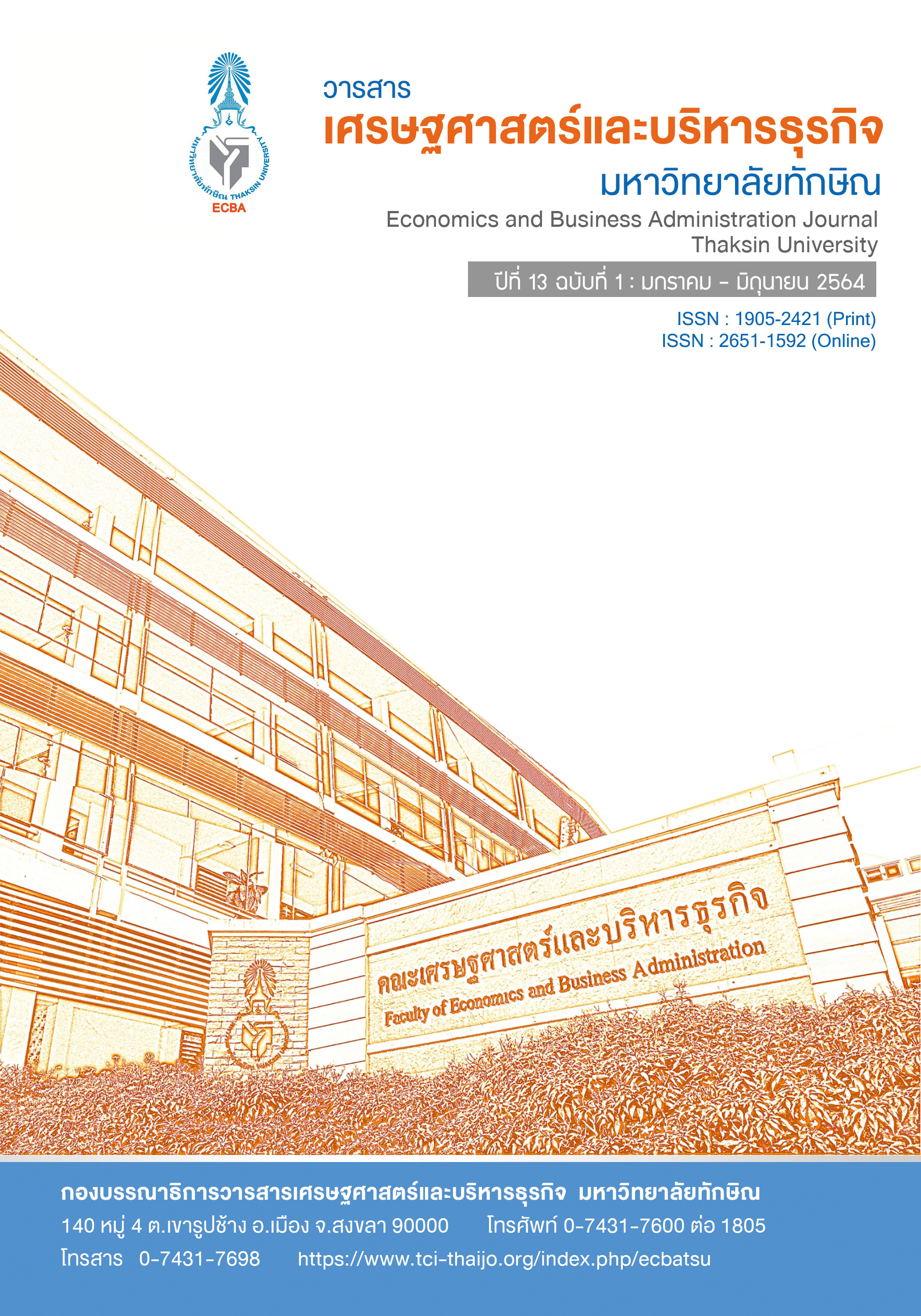Cost-Benefit Analysis of the Cage Culture of Sea Bass: Case Study of Koh Yo, Mueang Songkhla District, Songkhla Province
Keywords:
Cost and return, Net Present Value, Internal Rate of Return, Benefit/Cost Ratio, Sensitivity analysis, Switching value testAbstract
This research investigated of Cost-Benefit Analysis of the Cage Culture of Sea Bass : Case Study of Koh Yo, Mueang Songkhla District, Songkhla Province and the value of investment. The data for this study will be collected by questionnaires from 45 Farmers and in – depth interview. The data were then analyzed by using statistic description and quantity of cost and Benefit. The study result found that the revenue of Sea bass per cage 137,600 baht. There was average cost 88,090.61 baht consists of variable cost 85,923.95 baht accounted for 97.54 percent and fixed cost 2,166.66 baht accounted for 2.46 percent. Therefore, it has an operating profit of 49,509.39 baht per cage or has a return on cost of 56.20 percent. The results of financial analysis of the investment in sea bass culture in cages using a discount rate of 7 percent and 8 years project, it was found that it was worthwhile to invest. It had net present value at 582,121.30 baht, internal rate of return at 61 percentages, benefit/cost ratio at 1.87. Sensitivity analysis of this project found all 3 cases worthwhile to invest. The main factor that had and effect of the investment was the changing in revenue. In case of switching value test, it was found in a high level which make the investment low risk.
References
Arjarnmarayat, J. (2009). An economic analysis of Sea Bass production in cage culture, Amphoe Bang Pakong, Changwat Chachoengsao. Retrieved from http://journal.rmutp.ac.th.
Bangkok Bank. (2018). Loan interest rates. Retrieved from https://www.bangkokbank.com /en/Personal/Other-Services/View-Rates/Loan-Rates.
Bank of Thailand. (2018). Gross domestic product. Retrieved from https://www.bot.or.th/English/Statistics /EconomicAndFinancial/RealSector/Pages/Index.aspx.
Fishery Statistics Analysis and Research Group (2017). Statistics of Sea Bass in cage culture. Retrieved from http://www.fisheries.go.th.
Junsiripong, J. (2010). Aanalysis of cost and return of sea bass cage farming Bang Pakong district, Chachoengsao province. Retrieved from http://dspace.lib.buu.ac.th/xmlui/ handle/ 1234567890/593
Khrungthai Bank. (2018). Loan interest rates. Retrieved from https://krungthai.com/th/ rates/viewdetail/4
Luangthuvapranit, C. (2005). Principles of aquaculture. Program in aquaculture science, Faculty of science Thaksin university.
Petcharoon, P. (2009). Costs - return of hemibagrus filamentus (Yellow Mystus) in cage culture in Songkhla province. Retrieved from http://kb.psu.ac.th/psukb/handle/ 2010/9373.
Rarmchart, N. & Nuchanet, A. (2012). A comparative study of the costs and returns of Barramundi Culture in ponds, brackish and salt water. Case study sea bass culture in Prachuap Khiri Khan province. RMUTP Research Journal. Special Issue, 80-90.
Siam Commercial Bank. (2018). Loan interest rates. Retrieved from https://www.scb.co.th/ th/personal-banking/rates-fees/loan-interest-rate-detail.html.
Sriphairoj, K., Kamolrat, N. Chaimongkon, W. & Ingsrisawang, V. (2015). Cost-benefit production of Nile tilapia cage culture in Sakon Nakhon province. Khon Kaen Agricultural Journal, 43 (special issue 1), 588-594.
Wallapa, C.(2007). Cost-benefit analysis and management of Seabass Cage Culture: Case study in Songkhla outer lake, Koh Yor subistrict, Muang district, Songkhla province. Master degree thesis, Kasetsart University, Bangkok. 108 pages.
Wechakama, T., Oniam, V. Arkronrat, W. & Orachuno, R. (2012). Cost-benefit analysis of Sea bass culture: Case study of sea bass culture in Prachuap KhiriKhan province. Journal of Fisheries Technology Research, 6(1), 103-114.




